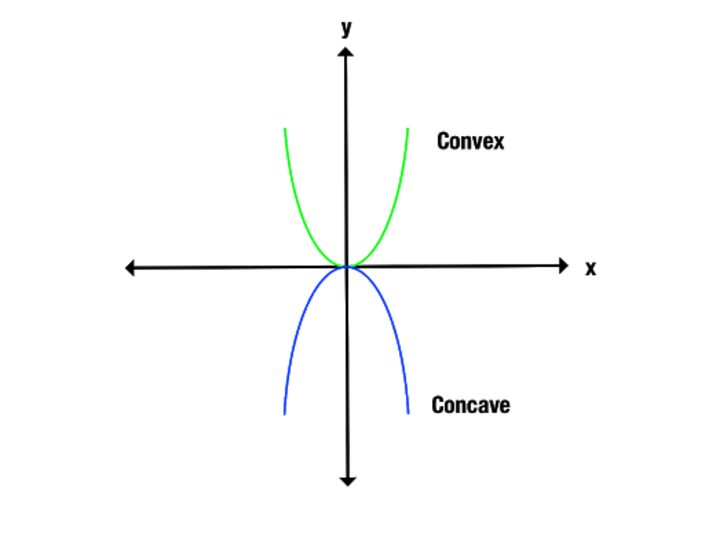Mirrors have been an integral part of human existence for centuries, aiding in self-perception, adornment, and scientific discovery. Among the various types of mirrors, concave mirrors stand out for their intriguing optical properties. These mirrors exhibit unique image formation characteristics that are distinct from those of convex mirrors. In this article, we will delve into the world of concave mirrors, exploring how they work, what happens to the image when reflected off them, and the difference between Concave and Convex mirror.
Understanding Concave Mirrors
A concave mirror is a curved mirror with an inward-curved reflective surface. The reflective surface on the inner side of the curve makes the mirror appear to bulge inward. This curvature gives rise to the characteristic optical properties of concave mirrors. These mirrors are widely used in various applications, including telescopes, shaving mirrors, and even as part of reflective headlights in vehicles.
Image Formation in a Concave Mirror
When an object is placed in front of a concave mirror, a series of optical processes occur, resulting in the formation of an image. This image can be real or virtual, depending on the object’s distance from the mirror. The image formation can be understood by considering the following scenarios:
- Object Beyond the Focal Point (F): In this scenario, when the object is placed beyond the focal point of the concave mirror, a real inverted image is formed between the focal point and the mirror’s surface. This image is projected on a screen and can be captured by an observer.
- Object at the Focal Point (F): When the object is placed exactly at the focal point of the concave mirror, the reflected rays become parallel and no real image is formed. Instead, the reflected rays appear to diverge from the focal point itself.
- Object Between the Focal Point (F) and the Mirror: When the object is placed between the focal point and the mirror’s surface, a virtual and erect image is formed on the same side as the object. This image cannot be projected onto a screen but can be seen when looking into the mirror.
- Object at Infinity: If the object is placed at an infinite distance from the mirror, the reflected rays are parallel, and they converge at the focal point after reflection.
- Object Inside the Focal Point (F): When the object is placed between the mirror’s surface and the focal point, the reflected rays diverge and do not actually meet. However, they appear to converge when extended backward, forming a virtual and erect image.
Difference between Concave and Convex Mirrors
Concave and convex mirrors have distinct optical properties due to their different curvatures, which lead to varying image formation characteristics. Let’s explore the difference between Concave and Convex mirror in more detail:
- Curvature: The most apparent difference lies in their curvatures. A concave mirror has an inward-curving reflective surface, whereas a convex mirror features an outward-curving surface.
- Image Formation: As discussed earlier, concave mirrors can form both real and virtual images, depending on the object’s position. In contrast, convex mirrors always produce virtual, erect, and diminished images, regardless of the object’s position.
- Focal Point and Center of Curvature: In concave mirrors, the focal point is real and lies on the same side as the reflective surface. However, in convex mirrors, the focal point is virtual and also located on the same side as the reflective surface. The center of curvature for concave mirrors lies on the same side as the reflective surface, while for convex mirrors, it’s on the opposite side.
- Magnification: Concave mirrors can produce both magnified and diminished images, depending on the object’s position. Convex mirrors always produce diminished images that are smaller than the actual object.
Applications of Concave Mirrors
Concave mirrors find applications in various fields, owing to their unique image formation characteristics. Some notable applications include:
- Dentistry: In dentistry, concave mirrors are used to get a better view of hard-to-reach areas in a patient’s mouth.
- Headlights: Some high-end vehicles use concave mirrors in their headlight systems to enhance light distribution and visibility.
- Makeup and Grooming Mirrors: Many makeup mirrors are designed with concave reflective surfaces to provide a magnified view of the face for precise grooming and makeup application.
Conclusion
Concave mirrors are remarkable optical devices that play a pivotal role in various applications, ranging from scientific exploration to everyday convenience. The image formation process in concave mirrors is governed by the principles of reflection and refraction, resulting in unique image characteristics that distinguish them from convex mirrors. Understanding the behavior of light rays in concave mirrors not only enriches our knowledge of optics but also enhances our appreciation of the technologies that shape our modern world. Whether it’s the telescopes enabling us to glimpse the cosmos or the shaving mirrors aiding our daily routines, the phenomena occurring in concave mirrors continue to captivate and amaze us.

